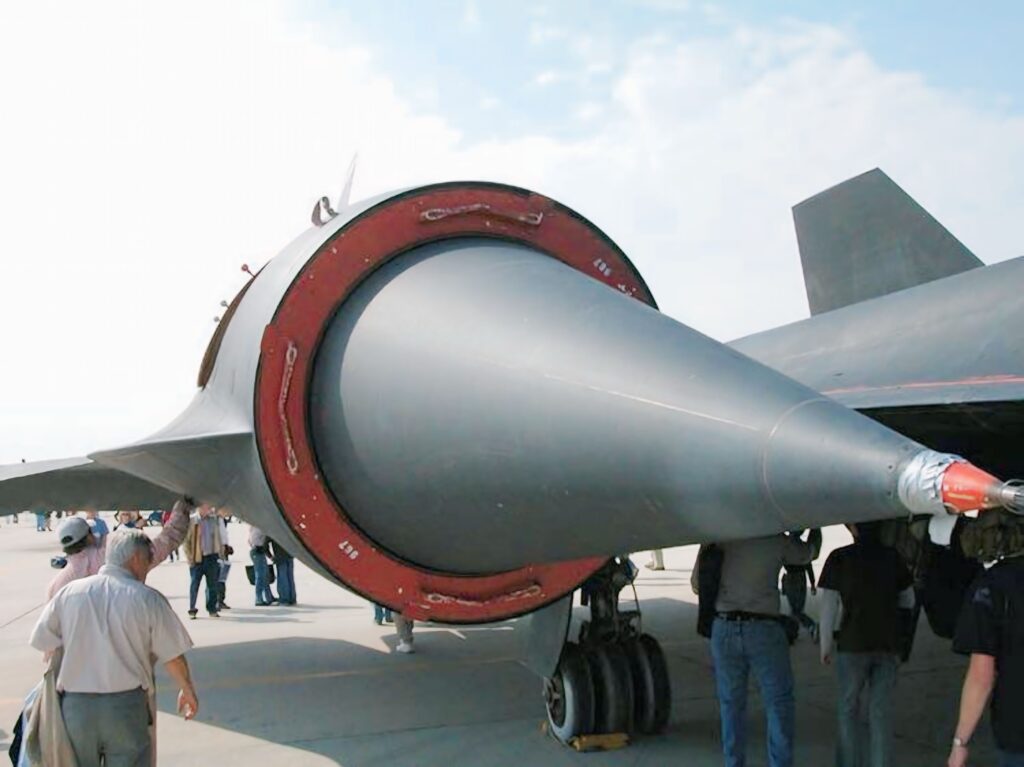
The Lockheed SR-71 Blackbird is one of the most iconic aircraft ever built, a machine that combined extreme speed, altitude, and cutting-edge engineering into a reconnaissance platform unlike anything before or since. Developed in secrecy by Lockheed’s Skunk Works team under Clarence “Kelly” Johnson, the SR-71 was created during the height of the Cold War to give the United States a way to gather intelligence without risking interception. First flown in 1964 and entering service in 1966, it went on to set records that still stand today.
The aircraft’s primary advantage was speed. The SR-71 could cruise above Mach 3—over 2,200 miles per hour—at altitudes higher than 80,000 feet. At that height, pilots could see the curvature of the Earth, and the sky above them faded into near-black. If detected by enemy radar or targeted by a missile, the standard evasive maneuver was simple: accelerate. Nothing in the world could catch it. More than 4,000 missiles were reportedly fired at Blackbirds during their service life, and none ever scored a hit.
Reaching those speeds came with intense engineering challenges. The SR-71’s skin heated to more than 600 degrees Fahrenheit in flight, so the aircraft was built primarily from titanium—an exotic material at the time that had to be sourced and refined under deep secrecy. Even then, the airframe expanded several inches from heat, which is why the jet famously leaked fuel while parked. The tanks only sealed properly once the aircraft warmed up during high-speed flight.
Power came from two Pratt & Whitney J58 engines, which acted as hybrid turbojet/ramjets. At lower speeds they behaved like standard afterburning jets, but above Mach 2.5 most of the air bypassed the compressor and the engines worked more like ramjets, pushing the aircraft faster while keeping fuel consumption manageable. The pointed engine inlets with movable spikes were key to keeping airflow stable at such extreme velocities.
The SR-71 carried no weapons. Its purpose was intelligence: high-resolution cameras, infrared sensors, and electronic surveillance equipment that could survey thousands of square miles in a single mission. Blackbird flights provided vital data on Soviet missile sites, nuclear facilities, and military movements. The aircraft often flew near or over hostile borders, and although political pressure eventually restricted overflights, near-space altitude still allowed the SR-71 to scan deep into denied territory.
Only 32 aircraft were built, and operating them was costly. Each mission required aerial refueling, specialized maintenance, and a large support team. Still, the Blackbird remained in service until 1998, long after satellites and drones began taking over some reconnaissance roles. Even today, many argue that nothing has fully replaced its unique blend of speed, reach, and unpredictability.
Beyond its statistics, the SR-71 holds a cultural legacy. It represents a period when aerospace engineers tackled problems that seemed impossible and solved them with creativity, experimentation, and risk-taking. The aircraft still looks futuristic, and its performance remains unmatched more than half a century later.
In aviation history, the SR-71 is not just a spy plane—it is a statement of what human ingenuity can achieve when the goal is simply to go faster, higher, and farther than anyone else.


